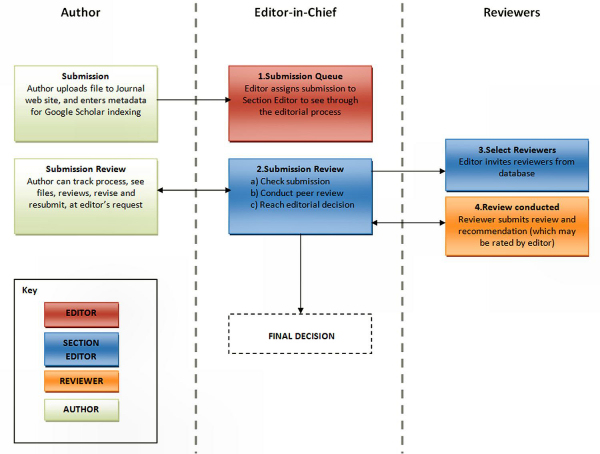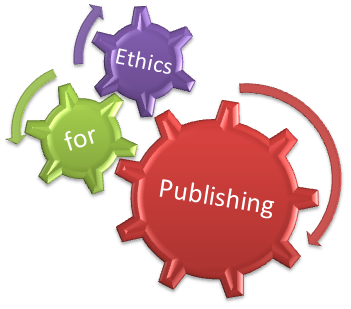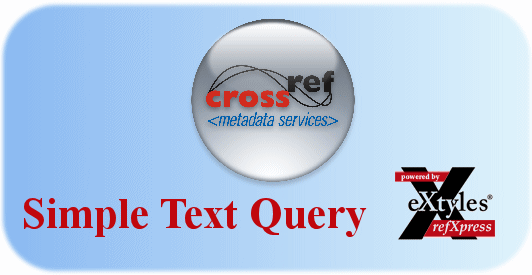- » Focus and Scope
- » Section Policies
- » Peer Review Process
- » Publication Frequency
- » Journal's Consent Policy
- » Reviewers Suggestion
Focus and Scope
The International Journal on Advanced Materials and Technologies (IREAMT) is a peer-reviewed journal that publishes original theoretical and applied papers on all aspects of advanced materials and related technologies.
The topics to be covered include but are not limited to all aspects regarding:
- Advanced Materials
materials science, liquid crystals, semiconductors, superconductors, optics, lasers, sensors, porous materials, light emitting materials, ceramics, adhesives, biological materials, metallic, thin films, colloids, energy materials, photovoltaics, solar cells, biomaterials, photonics, ferroelectrics, multiferroics, metamaterials, self-assembly, hierarchical materials, batteries, supercapacitors, thermoelectrics, polymer-based composites, metal-matrix composites, nanomaterials, nanocomposites, nanotubes, nanowires, nanoparticles, carbon, diamond, fullerenes, shape memory alloys, actuator/sensor (smart) materials and electromagnetic materials, models of the macroscopic properties of materials (mechanical, chemical, electrical, magnetic and optical) in terms of microscopic mechanisms, mechanic aspects of advanced materials and structures, damage and failure mechanisms in material, mathematical formulation of the kinematic, constitutive, and structural behavior of materials and structures, experimental methods directed toward mechanical characterization, damage evolution, and failures in materials and structures, computational methods for the solution of micro-, meso-, macro-mechanics mathematical models, methods dealing with the determination of local effects, innovative computational approaches for material and structural modeling of new and advanced materials, numeric simulation of materials behavior and processing, measuring methods and applications.
- Technologies
nanotechnology, nanobiotechnology, tissue engineering, self-assembly, processing and manufacturing of composite, laser methods in materials processing, modern casting and powder metallurgical techniques, nondestructive testing techniques, welding, sintering, heat treatment, thermo-chemical treatment, thin & thick coatings, surface treatment, machining, plastic forming, quality assessment, , technological devices and equipment, theoretical fundamentals of cleaner production, industrial application of cleaner production methods, production and operations management, manufacturing technology management.
The Editorial policy is to maintain a reasonable balance between papers regarding different research areas so that the Journal will be useful to all interested scientific groups.
IREAMT also publishes letters to the Editor and research notes which discuss new research, or research in progress in any of the above thematic areas.
Section Policies
Articles
Special Section on 5th CEAM 2013 - Virtual Forum
Editors- Editorial Staff
Peer Review Process
After submitting a paper, it will be peer-reviewed.
All our journals are peer-reviewed. Reviewers are appointed by the journal Editor.
Peer review has two key functions:
- To act as a filter and determine the validity, significance and originality of the work to ensure only good research is published.
- To improve the quality of research submitted for publication by giving reviewers the opportunity to suggest improvements.
The review procedure
Each submitted paper is subjected to the following review procedure:
- Preliminarly, the Plagiarism Prevention Office (plagiarismprev@praiseworthyprize.org) checks each submission through the Ithenticate’s CrossCheck software, in order to detect instances of overlapping and similar text in submitted manuscripts (click here to find out more about CrossCheck for Researchers), comunicating the results of the test to the Editor-in-Chief of the journal only in the case of abnormal percentage of similarity;
- the Editor-in-Chief, if not in conflict of interest, decides for general publication suitability;
- in case of conflict of interest, the Editorial Office invites an "Helper Editor" among the members of the Editorial Board to manage the process for the paper;
- the Editor-in-Chief (or the Helper Editor) assigns submission to a Section Editor (or to himself) among the members of the Editorial Board to see through the editorial process;
- the Section Editor invites 3 high profile experts as Reviewers to perform an independent review of the article and to collect at least two review reports per manuscript;
- the Journal adopts a single-blind peer review: the Reviewers are aware of the identity of the Authors, but the Authors are unaware of the identity of the Reviewers;
- taking care of the recommendations of the Reviewers, the Section Editor decides whether the particular article may be accepted as it is, or it may be revised or rejected;
- the Section Editor contacts the Corresponding Author by email with the editorial decision, Editor comments and Reviewer comments. Authors will be requested to revise their manuscript according to the Reviewers' suggestions, comments and criticisms;
- the revised manuscript must be returned within one month and the review process begins again.
Peer review process flowchart

- Editor's Role
The Editor oversees the editorial process, beginning with the assignment of the Section Editor to a submission. The Editor often plays the role of Section Editor in seeing accepted submissions through the Editing stage of the editorial process.
Section Editor's Role
Section Editors usually manage the Review of submissions and the editing of those that are accepted. A Section Editor initially assigned to a submission by an Editor may be asked only to see it through the Review stage, after which, if the submission is accepted, the Editor takes over (in the role of Section Editor). Editors send requests to Section Editors to see a submission through the editorial process.
- Reviewer's Role
The Reviewer is invited by email to review a submission, which includes its title and abstract, as well as the journal's URL and a username and password for the Reviewer to use to enter the journal. What is described here is the principal method for reviewing (and ensuring complete records of the process), which involves the Reviewer conducting the Review on the journal's web site.
Author's Role
The Author (corresponding author) of a submission is able to log into the journal's web site to track the progress of the submission and participate in the editorial process. If there is more than one Author, the Author submitting the item is asked to identify the principal contact (corresponding author) who becomes the one with whom all editorial correspondence is conducted and who accesses the journal web site.
Publication Frequency
 The Journal is published annually.
The Journal is published annually.
Journal's Consent Policy
Generic users, readers and authors who register themselves for a private access to the journal website, give implicitly their consent for Praise Worthy Prize to process their personal data in compliance with the Privacy Policy they had sight of.
Reviewers Suggestion
In the submission process, the submitter is requested for kindly suggest three potential reviewers with the appropriate acknowledged expertise to review the manuscript. These reviewers will not be automatically approved by the Managing Editor.
At Step 1 of the submission procedure please provide detailed contact information (address, homepage, phone, verified institutional e-mail address). The proposed reviewers should neither be current collaborators of the co-authors nor have published with any of the co-authors of the manuscript within the last five years, according to the Ethical requirement of the review process. They should be from different institutions of the authors. The submitter may also identify appropriate members of the Editorial Board of this journal or others Praise Worthy Prize's journals as potential reviewers. The submitter may also suggest reviewers from the authors that you frequently cite in your paper.
Please send any question about this web site to info@praiseworthyprize.com
Copyright © 2005-2024 Praise Worthy Prize





